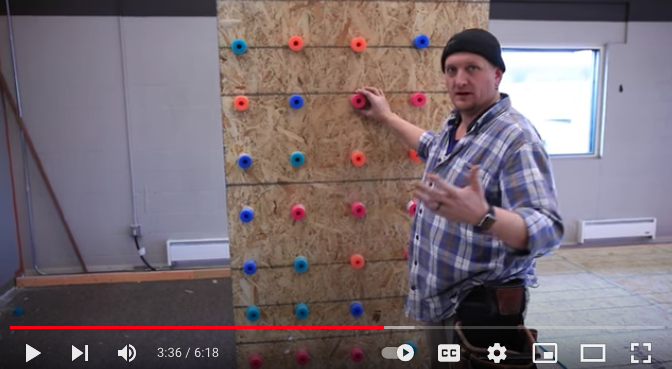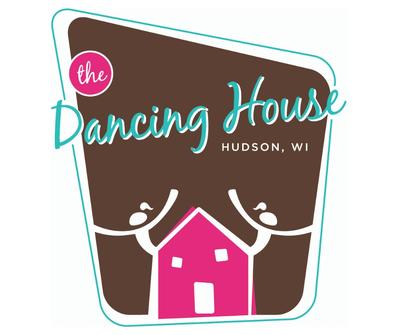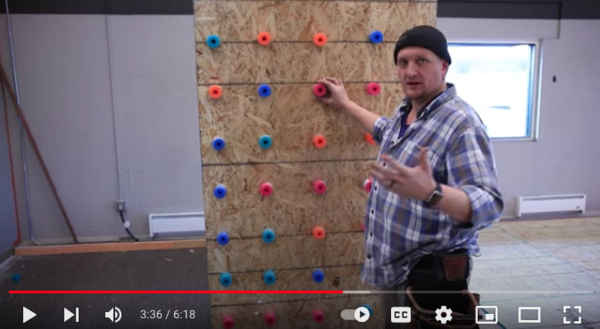Why Does the Floor Matter? Creating the Perfect Dance Space

Why Does the Floor Matter? Creating the Perfect Dance Space
When it comes to dance, the floor beneath your feet plays a crucial role in your performance and overall well-being. It's alarming to see dancers practicing on unforgiving surfaces like concrete, asphalt, or grass, especially when they're executing jumps, leaps, and turns. Whether you're a seasoned dancer or a young student with growing bones, reducing the impact on your body is essential to prevent injuries. That's why a floating wood sub-floor is so important for all dance activities. In this blog post, we'll explore the significance of a sprung sub-floor, debunk some misconceptions, and share a fun and cost-effective method we used to create a safe dancing environment at our studio.
The Impact of Dancing on Hard Surfaces:
Imagine dancing directly on concrete or on a surface firmly attached to it, such as wood, vinyl, tile, or carpet. Every jump and landing transmits an impact to your body that can be as much as three times your body weight. Over time, this repetitive stress can lead to fatigue, shin splints, lower back and knee issues, and even hairline fractures in your feet. Not only are these conditions painful and debilitating, but they also hinder your progress as a dancer. Even hardwood floors installed directly on concrete, while visually appealing, offer no significant improvement over dancing on concrete itself.
The Role of a Floating Wood Sub-Floor:
To protect the health and well-being of dancers and teachers alike, a floating wood sub-floor is a necessary tool. It provides a buffer between the dancer's body and the underlying hard surface. By absorbing and dispersing the impact forces, it significantly reduces the risk of injuries. Furthermore, floating sub-floors create an optimal environment for dancers to excel, take more classes, and enjoy the art of dance.
Our Pool Noodle System: A Fun and Cost-Effective Solution:
At our studio, we have implemented a creative and budget-friendly approach to create a safe dancing space—a pool noodle system. This method involves utilizing pool noodles, those colorful foam tubes we often associate with swimming, to create a resilient and shock-absorbing layer between the floor and the dance surface. The noodles act as a cushion, allowing for controlled and safe movement while minimizing the strain on dancers' bodies. To witness the transformation of our floor, we've created a fun YouTube time-lapse video showcasing the process from start to finish.
The floor beneath your feet is more than just a surface to dance on—it significantly impacts your dance experience, safety, and long-term well-being. Dancing on hard surfaces like concrete can lead to various injuries and hinder your progress as a dancer. Investing in a floating wood sub-floor is crucial for maintaining the health and happiness of both students and teachers. By reducing the impact on the body, dancers can excel, take more classes, and feel confident in their abilities. So let's prioritize the floor and create a safe and enjoyable dancing environment for everyone.

73 Tribute Ave.
and
2000 O'Neil Rd. Suite 100
Hudson, WI 54016
melissa@thdancinghouse.com
We love The Dancing House! Melissa + her team are energetic and so excited to share their love of dance to their students! We appreciated the laid back but effective style in learning. What a treasure to have in Hudson!
~Becky Turnbull
Categories
- News (63)
- TDHDanceCompany (7)
- Healthy in the Valley (23)
- Dance on Demand (36)
- Online Classes (12)
- Masterclasses (25)
- Social Dance Classes (5)
- Dance Lessons (17)
- Private Lessons (21)
- Adult Dance Classes (23)
- Sensational Seniors (11)
- Six Week Sessions (11)
- Dance Camps (11)
- Local Events (12)
- Summer Dance (6)
- dancing for the divine (1)
- Recital (4)
- TDHPC (1)
- Dance Competition (1)
- Make Wellness (1)
- FMSC (1)
- Brick and Mortar Visibility (1)
- Prima (3)
- Birthdays (3)
- Break Dancing (3)
- 2 too Cute (1)
- Toddlers (1)
- Babies (1)
- Two Year Olds (1)
- Pom and Kick (1)

0 comments
Leave a comment